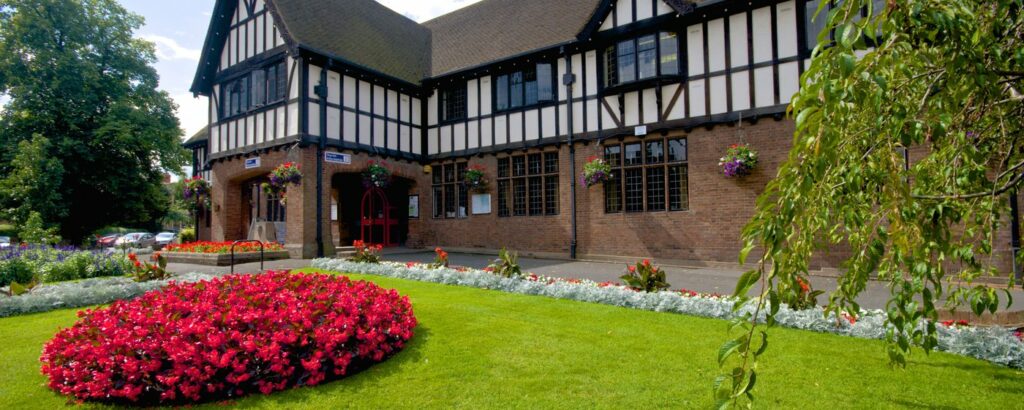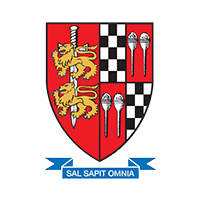
Historic Droitwich Spa
The historic town of Droitwich Spa would like to extend to you a warm welcome. This friendly town offers plenty to see and do in order to keep the whole family entertained. We have a rich and diverse history, with the towns ‘Salt Museum’, ‘Droitwich Calling’ radio exhibit and historical guided town walks there is plenty to keep history enthusiasts engaged. The recently restored Droitwich canal network is a haven for walkers, cyclists and nature lovers. The open air lido and acres of green parks have enough play areas to keep the children occupied. Or enjoy a spot of retail therapy and a coffee in the St Andrews shopping centre or at one of our many markets that regularly take place in the town. Numerous well established festivals take place throughout the year which remains popular with the local community and visitors.
Droitwich Spa is surrounded by the beautiful Worcestershire countryside, it is a town of great charm offering its visitors plenty to see and enjoy. The town, known during Roman times as ‘Salinae’ translates as ‘The place of salt works’ has been the site of a settled community for over 2000 years. It owes its existence to the natural brine springs which emanate from subterranean beds of pure rock salt 200 ft below the ground. Dissolved by underground springs, pressure forces the salt to the surface as brine. It is unique in that its density and buoyancy are only rivalled by the Dead Sea.
Droitwich Spa is an ideal centre from which to explore the Heart of England. To the north lies the City of Birmingham, home of the National Exhibition Centre and to the south stands the City of Worcester, dominated by its Cathedral. To the east of Droitwich Spa is Shakespeare’s Country and Stratford-Upon-Avon. To the west are the Black and White villages of Herefordshire and the principality of Wales.

A brief history of Droitwich Spa
Shrouded in history and beautiful countryside, Droitwich Spa is unique among the Spa towns of Britain. Visitors travel here not to drink the water but to experience the effect of floating weightlessly in the warm brine.
The town owes its existence to the remarkable natural brine springs which emanate from subterranean beds of pure rock salt 200 feet below ground level. The importance of the salt can be seen in the town’s motto – ‘Sal Sapit Omnia’ meaning Salt Flavours all. Dissolved by underground springs, artesian pressure forces the salt to the surface as brine, ten times saltier than seawater. Its density and buoyancy are only rivalled by the Dead Sea.
Droitwich Spa has revolved around its salt making industry for 2000 years. Ancient relics dating from this period and later can be seen at the town’s local Heritage Centre. When the Romans invaded they recognised the value of salt, building a number of ancient roads, known as Saltways from Droitwich, as well as a fort and villa. They named Droitwich Salinae – Place of Salt and even paid part of their soldier’s wages in salt, known as ‘Salarium’ from which we derive our modern day word for Salary.
Many Anglo Saxon charters relate to Droitwich, then known as ‘Wich.’ The brine springs were regarded as the fourth wonder of Saxon Britain, an accolade noted by the 9th century writer, Nennius.
Before 1066, the King only had part holdings in the brine pits and salt producing pans. The Domesday Book of 1086 records that William I took over all brine pits and salt pans but allowed certain individuals rights to them. A salt tax was imposed at town gates around the country as the commercial activities of Droitwich expanded. During the Domesday period Droitwich was producing 72,000 gallons of brine per year.
The town continued to grow as the wealth generated from the salt production increased. Many half-timbered buildings dating from the 14th century can be seen in the picturesque High Street.
Among the famous sons of Droitwich are St. Richard de Wyche, who became Bishop of Chichester and Pilgrim Father Edward Winslow, one of the founders of the ‘New World.’ The life of St. Richard can be followed in a unique series of pictures made up of tiny pieces of tessellated Venetian glass at the Sacred Heart Church. These mosaics are regarded as the finest in Britain and are the result of ten years hard work.
John Corbett, a Victorian entrepreneur did much to change the town, releasing it from its industrial image to fashionable Spa resort. He built Europe’s largest salt works near Bromsgrove and built some of the Spa’s most prominent buildings, including the Raven and Worcestershire Hotels and the Brine Baths in 1887. The frontage to this old building now houses the town’s Tourist Information & Heritage Centre.
Brine bathing remained fashionable up until the Second World War that made Droitwich Spa a popular destination for visitors from both home and abroad.
Along with other Spa towns and resorts, Droitwich saw a gradual decline in popularity after the Second World War. Eventually the Brine Baths closed and no Spa facility existed for over ten years.
The re-emergency of interest in health and leisure resulted in the new Brine Bath complex opening in 1985, Britain’s biggest spa development this century. Unfortunately these baths are not open to the public at present.
Today’s Droitwich Spa boasts many attractions for the visitor in search of something different, be it health or heritage. The whole development of the town, from ancient salt making centre to the present day can be explored at the Droitwich Heritage Centre.
Heraldic Badge of Droitwich Spa

Accepting that, as a civic authority, only the Town Council was permitted to “bear and use” the Armorial Bearings (Arms and Crest) under the Laws of Arms, the Town Council in 1980 petitioned Garter King of Arms in London for the grant of a Heraldic Badge, which could be displayed by social or sports clubs, other local groups and organisations.
A preliminary design for a Heraldic Badge was prepared early in 1981 and final version received by the Town Council in November 1981 under Letters Patent under the hands and seals of the King of Arms.
The description of the Badge is as follows:
A lion stands in front of a pair of salt barrows against a background Gules (red), the roundel being encircled by a wreath composed of leaves of the wild pear.
The lion and salt barrows require no explanation, being taken from the Coat of Arms. The wreath of wild pear is meant to indicate that Droitwich lies in the County of Worcester, which has pears among its emblems.
The lion was shown “statant” (i.e. standing) on the original design but in the final approved version it is depicted “passant”, as if moving across the salt barrows and occupies the central portion of the roundel.
For those interested in the Armorial Bearings from which the Heraldic Badge is derived, these were granted to the Town and Borough of Droitwich under the hands of the York Herald and Rouge rose Pursuivant at the Heralds Visitation of Worcester in 1634. The description of those Arms is:-
Gules – a Sword of State points downwards
Argent – surmounted of two Lions passant or Impalling Quarterly
First and Fourth – Chequy Argent and Sable
Second and Third – Gules two Barrows erect in fesse Argent
The Droitwich Coat of Arms

In 1215 King John signed a charter that gave the burgesses of the town all the brine pits and salt dues in return for an annual payment of £100. King John thus became a special patron of Droitwich. His coat of arms was two leopards.
The King later sold the annuity to his relative ‘William Long Sword’ hence the addition of the Sword on the original Coat of Arms that was used throughout the thirteenth century.
Heralds, knowing nothing about leopards, always depicted them as lions on all fours! Later the ‘chequers’ were added. These represent the chequered tablecloths on which the salt dues were paid to the burgesses whose office was housed in the Exchequer House on the corner of Friar Street and St. Andrew’s Street and now known as the old Town Hall.
The ‘spoons’ are symbols of the salt industry. They portray the wicker moulds in which the salt was cast. They were known as ‘barrows.’
The Latin inscription under the Coat of Arms reads:
SAL SAPIT OMNIA
‘Salt Flavours All’
